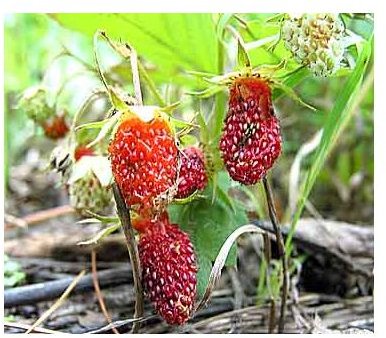Learn How to Spot Edible Wild Strawberries in the Wilderness
Overview
The wild strawberry is a low-growing, ground-covering plant with glossy, hairy, dark green leaves. They grow in three-lobed patterns and in the summer produce small, five-petalled flowers. Wild strawberries are common in the wilderness. They often grow in limestone walls and favor chalky soils. Wild strawberries are classified only as accessory fruits, because the fleshy part is not developed from the seed but from the peg of its hypanthium that supports the seeds. Therefore, the yellow seeds you see on the exterior of strawberries are technically the fruit.
Are Wild Strawberries Edible?
So, can you eat wild strawberries? Yes, in fact, Native Americans consider them prized finds – because not only are they enticing and tempting to the eyes but also delicious and tasty to your palate. The fruit ripens in early summer or sometimes, late spring. They’re smaller than your regular strawberries, but wild strawberries taste much better. Whether you prefer to add them to pies, eat them fresh or make preserves, they are scrumptious and yummy gift of Nature.
Best of all, they are good for you. Wild strawberries are nutritious, eight of these tasty treats have more Vitamin C than a single orange. They are low in calories, only 45 calories per cup; edible wild strawberries are also fat-free, cholesterol-free and sodium-free. Wild strawberries are also high in folic acid, calcium polyphenols, selenium, and Vitamin A. The leaves, when boiled, can be an alternative treatment for diarrhea. Studies also show that wild strawberries can help inhibit the growth of cancer cells (https://www.sciencedaily.com/releases/2007/12/071203094835.htm).
Are Wild Strawberries Poisonous?
While not all wild strawberries are not at all poisonous, some actually are dangerous to eat. Some of the common poisonous wild berries found in the wilderness are Climbing Nightshade, Sticky Currant, American Pokeweed, and Elderberries (https://adventure.howstuffworks.com/survival/wilderness/all-wild-berries-poisonous2.htm). Some imply that Hookers Fairy Bells and Poison Ivy resembles wild strawberries; if you do your research before you venture out into the woods, it is highly unlikely that you’ll mistaken these poisonous plants as wild strawberries.
Wild Strawberry Trivia
• Wild strawberry is a rare fruit; it carries its seeds outside.
• Wild strawberries have about 200 seeds per berry. No two seeds are alike; each seed can be cultivated to a new genetic variety.
• Wild strawberries do not ripen after picking.
• A wood strawberry, which resembles a wild strawberry, with yellow flowers and fruit, is edible. However, a wood strawberry has no flavor.
Wild and Free
These small, tart, and amazingly tasty wilderness jewels are absolutely fantastic. Not only can you eat wild strawberries, but also they are incredibly good for you. Think wild strawberry preserves on your pancakes; consider rich creamy frozen yogurt dappled with these gems. Edible wild strawberries are yummy, wild, and free. If you don’t have time to forage for this treats, then check with your local grocery stores. No matter how you acquire wild strawberries, the benefits of tasting the right ones are well-worth any time or financial investment.
References
Science Daily: Red Alert: Wild Strawberries May Reduce Cancer Risk - www.sciencedaily.com
How Stuff Works: Are All Wild Berries Poisonous? - www.howstuffworks.com
Image Credits
Foraging with the “Wildman” - www.wildmanstevebrill.com
